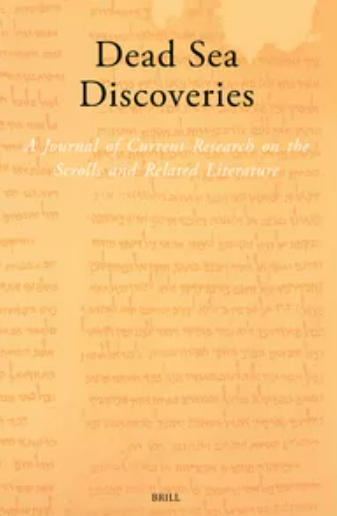https://doi.org/10.1163/15685179-02903007
이 논문은 고대 유대 문학에서 예언과 계시의 일부로서의 수행(performance)을 검토한다. 본문의 핵심은 성서 본문 내의 소위 '예언자적 행위'(prophetic actions)에 초점을 맞춘다. 학계에서 이 범주를 사용함으로써 예언의 일부로서 비언어적 수행이 부각되었지만, 이러한 다양한 행위의 효력(efficacy)과 그것이 기록되거나 구술된 예언과 어떻게 구별되는지에 대한 의문이 제기된다. 이에 본 논문은 그 기능을 더 깊이 검토하기 위해 J.L. 오스틴의 언어행위 이론(speech act theory)을 재적용한다. 이사야 20:1–6과 예레미야 51:59–64를 중심 사례 연구로 삼아, 이러한 수행들 사이에 존재하는 다양성뿐만 아니라, 그것들이 어떻게 예언자의 전기, 기록, 발화와 서로 얽혀 있는지를 보여준다. 이러한 현상을 좀 더 유연한 렌즈를 통해 탐구함으로써, 제2성전기에 나타난 수행과 예언의 지속적인 중요성이 더욱 분명해진다. 논문은 이를 11Q시편a(11QPsalmsa)와 에스겔의 엑사고게(Exagoge of Ezekiel)를 통해 입증한다.
This article examines performance as part of the prophetic and revelatory in ancient Jewish literature. The body of the article centres on the so-called “prophetic actions” within the biblical corpus. Scholarship’s use of this category has highlighted nonverbal performance as a part of prophecy but raises questions regarding the efficacy of these varied actions as well as their distinction from written or spoken prophecy. Here I reapply J.L. Austin’s speech act theory to further examine their function. Isaiah 20:1–6 and Jeremiah 51:59–64, my central case studies, demonstrate not only the variety among these performances but also how interwoven they are with prophetic biography, writing, and speech. Exploring such phenomena through this more flexible lens further illuminates the continued significance of performance and prophecy in the Second Temple period, which the article demonstrates using 11QPsalmsa and the Exagoge of Ezekiel.






